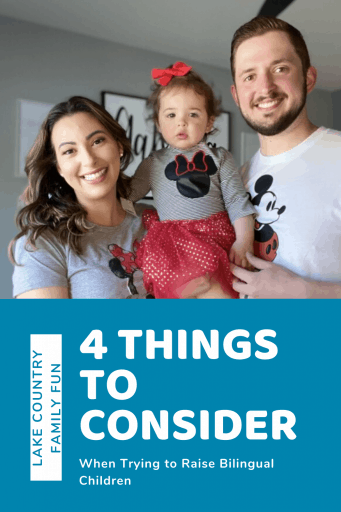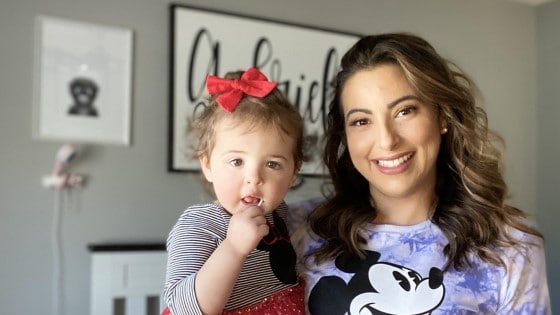A two-language household is one in which each parent has a different native language AND both languages are used in everyday life. There are a growing number of two-language households in the United States, and even in ones that are not, many families are trying to raise children capable of speaking multiple languages. This is a very challenging endeavor; how should the languages be used? When? By whom? How much? Will my kids learn them? Will I confuse them? There are lots of great questions here on raising bilingual children and some are very difficult to answer, so Dave and I did some research to figure out some of the best ways to go about raising our kids in a multilingual home.
4 Things to Consider When Raising Bilingual Children
#1 The so called “One parent, one language” method.
Research shows that one of the most effective ways to raise a bilingual child is to have one parent speak one language and the other parent speak the other language consistently. We have my grandma (Mamina) speak only Spanish to Gabi, where my mom and I speak to her in both languages and Dave in only English. I try to say a phrase or word in English and then repeat it in Spanish or vice versa. So as you can see, we don’t follow this method perfectly, but it is considered to be a highly effective strategy by the experts.
#2 How soon should you start?
As early as you’d like! Research shows that the critical period for bilingual learning is between 1 and 6 years old. That’s not to say that after 6 they are incapable; what matters most is the level of exposure. Even before one year of age they can distinguish who’s speaking which language. Since Gabi came home from the hospital, we’ve been speaking both languages to her, and although her first words were in English, shortly after she started speaking, she began picking up Spanish words and repeating them. Now (at 22 months) she uses a wide array of words in both languages and can switch between several ones.
#3 Consider the level of exposure.
If you are speaking two or more languages at home, consider using technology to your advantage. Change up the language of the movies you watch or even look up YouTube channels that offer multilingual learning, our favorite is called “Super Simple”. We recently started watching movies on Disney+ and have been switching between English and Spanish when we watch them. We often have ‘dance parties’ where I play some Salsa, Merengue, etc…, and I try to sing the Spanish words to Gabi to increase the amount she hears.
#4 Toss out myths.
Some people say that learning a second language at an early age can confuse a child, that’s a myth! Research shows that very early on children can, not only distinguish between multiple languages, but also recognize who speaks each language to them. Some say that learning another language will delay speech, but that’s not the case for most. Don’t get discouraged if they are not speaking yet and you are teaching multiple languages. Keep working on it and once they are confident enough, you’ll hear them speak in both.
Resources from: https://www.linguisticsociety.org/resource/faq-raising-bilingual-children
—
There are great resources online and even books that can help as well – if you have any questions, send me a DM at Mamacitadiaries on Instagram. I’d love to chat more!
Check out these classes at the Oconomowoc Community Center in spring 2025!
Give your child a head start in language learning with our interactive Introduction to Spanish class, designed for kids ages 4-12! Through songs, games, and storytelling, they’ll explore basic vocabulary, phrases, and Spanish culture while building a strong foundation for their school studies. Click on a class title below to register.
Intro to Pre-Spanish ~ Ages 4-7 from 4pm-4:30pm
This class will provide a foundational language introduction designed for young children, focusing on basic Spanish vocabulary and phrases through fun, engaging activities like songs, games, and simple storytelling with an emphasis on greetings, colors, and numbers.
Intro to Spanish ~ Ages 8-10 from 4:45pm-5:30pm
Intro to Spanish ~ Ages 11-12 from 5:45-6:30pm
This class will introduce students to the foundational elements of the Spanish language, including basic vocabulary, pronunciation practice, and simple phrases, while also providing a glimpse into Spanish culture.
Classes run April 3-24
Instructor: Courtney Froemming
Related Posts:








